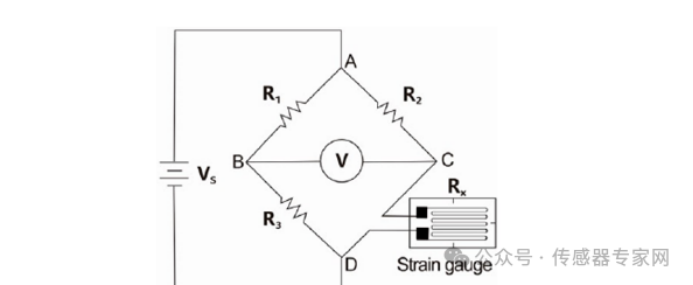Resistance strain sensor is a widely used sensor in industrial automation, mechanical manufacturing, building structure monitoring and other fields. It utilizes the strain effect of materials to convert changes in physical quantities (such as force, pressure, displacement, etc.) into changes in resistance values, which are then converted into electrical signals through circuits to achieve accurate measurement of physical quantities. This article will provide a detailed introduction to the principle and application of resistance strain sensors.

The principle of resistance strain sensor
The working principle of resistance strain sensors is based on the strain effect of materials. When a material is subjected to external forces, its dimensions (such as length, width, thickness) will undergo slight changes, which will cause a change in the material's resistance value. Specifically, a resistance strain sensor consists of an elastic sensing element and a resistance strain gauge attached to its surface. When the elastic sensitive element deforms under external force, the strain gauge will also deform accordingly, and its resistance value will change accordingly. This change in resistance value can be converted into an electrical signal output through circuits such as Wheatstone bridges, thereby achieving the measurement of physical quantities.
Resistance strain gauges are usually made of metal foil or semiconductor materials, and the change in resistance value is proportional to the strain. Strain gauges can ensure significant resistance changes even under small strains through precise manufacturing processes, thereby achieving high-precision measurements. In addition, in order to improve the accuracy and stability of measurements, resistance strain sensors usually include compensating resistors and other components to eliminate the influence of environmental factors such as temperature.
Application of Resistance Strain Sensor
Resistance strain sensors have been widely used in various fields due to their advantages of high precision, high sensitivity, and simple structure
Industrial automation control: In terms of pressure measurement, resistance strain sensors are widely used in tire pressure detection, automotive manufacturing, machinery manufacturing, aircraft, ships and other equipment for pressure monitoring. By measuring the stress values of the equipment, the pressure changes of the equipment can be reflected in real time, ensuring the normal operation and safety performance of the equipment.
Engineering structure monitoring: In the safety monitoring of engineering structures such as bridges and buildings, resistance strain sensors can monitor the stress state of the structure in real time and prevent potential safety hazards. Through continuous monitoring of structural strain, damage and deformation of the structure can be detected in a timely manner, providing important basis for the maintenance and repair of the structure.
Medical equipment: In medical equipment, resistance strain sensors are used to monitor physiological signals of patients, such as force feedback control of prosthetic joints. By measuring the patient's movement deformation, sensors can achieve a more natural and comfortable user experience, improving the patient's quality of life.
Consumer electronics: In smart wearable devices, resistance strain sensors are used to monitor human activity status. For example, strain gauges in heart rate monitoring bands can sense tiny skin stretches and convert them into heart rate data, providing users with health monitoring services.
In addition, resistance strain sensors play an important role in fields such as aerospace, earthquake monitoring, and ocean exploration. With the continuous advancement of technology and the expansion of application fields, the application prospects of resistance strain sensors will be even broader.
conclusion
Resistance strain sensors, as an important measuring tool, play an irreplaceable role in various fields such as industrial automation, engineering structure monitoring, medical equipment, and consumer electronics. By gaining a deeper understanding of its working principle and application areas, we can better utilize this technology to bring more convenience and safety to production and daily life. In the future, with the continuous advancement and innovation of technology, resistance strain sensors will demonstrate their unique charm and value in more fields.
Source: Sensor Expert Network



